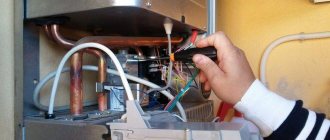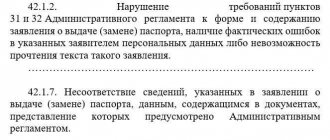This obligation arose after gas equipment was divided into intra-house and private-in-apartment. In fact, you should pay for maintenance rather than inspection. Let's take a closer look.
The list of maintenance work includes, of course, a visual check of equipment installation compliance with regulatory requirements. The tightness of the connections should also be checked using a device or soap emulsion; integrity and completeness of equipment. The functionality and lubrication of taps (valves) are checked. The presence of draft in the smoke and ventilation ducts and the presence of air flow for combustion are monitored. The specialist must also instruct the subscriber on safety rules. If any defect appears and the equipment needs to be replaced, the owner of the apartment or house will have to pay additionally for repairs and spare parts.
Many of us still remember Soviet times, when maintenance was done free of charge. And in the future, for many years, there was no need to pay separately for this service. Until the 90s of the last century, in-house gas pipelines and equipment were on the balance sheet of gas distribution organizations. Then the tariff included payment not only for the gas itself, but also for the maintenance of gas equipment and networks. In the 90s, everything began to change. In 1997, gas equipment was legally excluded from the list of hazardous objects. For some time there were no documents at all on gas equipment in residential buildings. In the late 90s and early 2000s, a number of regulatory documents were adopted that practically destroyed the control system for in-house gas equipment.
Since 2006, by decision of the Federal Tariff Service, the costs of servicing VDGO have been removed from the retail price of gas. Maintenance and repairs began to be carried out under contracts with management companies and owners of individual houses for a fee.
With the change in legislation, many organizations appeared that did not have and do not have special equipment or qualified specialists. Often after their work it was necessary to call the emergency service.
To restore order, in 2008 the Government of the Russian Federation adopted Decree No. 549 and “Rules for the supply of gas to meet the household needs of citizens.” In 2009, Order No. 239 of the Ministry of Regional Development of the Russian Federation was issued on the “Procedure for the maintenance of repairs of in-house gas equipment.”
In accordance with these documents, the consumer began to be responsible for the condition of the equipment, who is obliged to timely conclude maintenance contracts with a specialized organization.
In May 2013, Russian Government Decree No. 410 “On measures to ensure safety during the use and maintenance of indoor and indoor gas equipment” appeared. In December - Rostekhnadzor order No. 613, which approved “the rules for conducting technical diagnostics of in-house and in-apartment gas equipment.”
In accordance with these documents, the management company, partnership, cooperative or individual entrepreneur purchasing gas as a communal resource for citizens is responsible for the internal equipment of an apartment building. The owner is responsible for the equipment inside the household or apartment. And he must pay for the service of the organization with which the contract was concluded. Some citizens refuse to enter into contracts under these conditions and do not allow specialists to carry out maintenance. Is it dangerous. Both for the owners themselves and for their neighbors. No one knows what condition the equipment is in each apartment in the apartment building. Perhaps as a result of such negligence, household gas is increasingly exploding in residential buildings. There were eight explosions in 2014. 14 people died. Last year there were 15 explosions in which 17 Russians lost their lives. In 2021, residential buildings were blown up in Sochi and Moscow. The explosion in Yaroslavl killed seven people. Similar emergency situations occurred in the Kaliningrad region, Tula and Voronezh regions. Two people died in the Belgorod region. Twenty apartments were destroyed in the Saratov region.
On October 23, 2021, two houses exploded at once. In a ten-story building in Ryazan, three people died and 13 were injured, including a child. In the city of Yalutorovsk, Tyumen Region, no one died in the explosion, but two adult residents, one child and a passer-by were injured. On the night of November 6 in Ivanovo, a gas exploded in a two-story house. Six people died, including a four-year-old girl. Four people were taken to hospital. These are statistics only for the most high-profile cases. But thousands more Russians die from carbon monoxide poisoning, without explosions.
In connection with the above, it is probably not worth refusing maintenance, not concluding an agreement and not paying.








